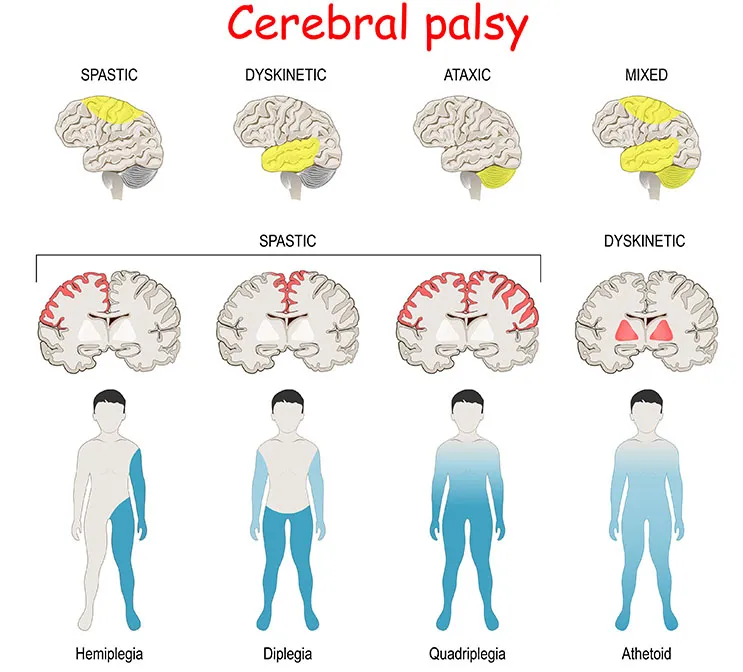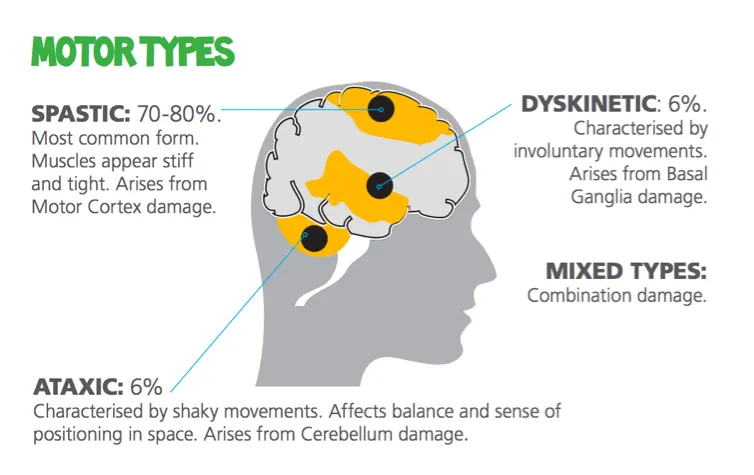Types Cerebral Palsy
Explore more about the types of Cerebral Palsy

How Can You Tell If Someone Has Cerebral Palsy?
● Observation by doctor at birth using a series of tests.
● Sign of delays in developing movement, posture and balance necessary for sitting and standing after brain nerves and muscles are fully developed.

The four main types of CP are : spastic, dyskinetic, ataxic, and mixed.
1. Spastic
70-80% of people with CP have spasticity. People with spastic CP are unable to relax the muscles in some parts of their body and face higher resistance to movement. It is caused by damage to a region of the brain that controls voluntary muscle movements such as riding a bike or walking. Spastic CP can be further described by parts of the body that are affected.
● Spastic hemiplegia: One side of the body (e.g. one arm and one leg) is affected.
● Spastic diplegia: Both sides of the body are affected (predominantly the legs)
● Spastic quadriplegia: The whole body is affected (arms, leg, face and trunk) and is the most severe form of spasticity.
2. Dyskinetic
People with dyskinetic CP have slow, involuntary muscle movements that they cannot control and can change within a single day or from day to day. Body parts that can be affected are the arms, legs, face and tongue.
3. Ataxic
People with ataxic CP have problems with balance and perception of depth. They are usually unsteady when they walk, may fall frequently and have problems with actions that need a lot of control such as writing. In some cases when they walk, their speech is not clear.
4. Mixed
Some people who have more than one type of CP are known to have mixed CP.

What Happens To Children With Cerebral Palsy?
Children with spastic leg muscles may adopt abnormal style of walking due to their inability to control and relax certain muscle.
It is common to find that such children have excessive bending at the knees and may trip frequently, stumble or fall when they toe walk.
The need to toe walk or bend at the knees is caused by shortened muscles, hardened joints and bone deformities. If these shorthened muscles (called fixed contractures) of the arms or legs are left untreated, it can lead to differences in length between the arms or legs and muscle.
Since the growth of muscle is often slower than the growth of the bone, this will gradually lead to differences in length between the arms or legs and muscle.
Therefore, early intervention is crucial in preventing the permanent development of these abnormal structures.